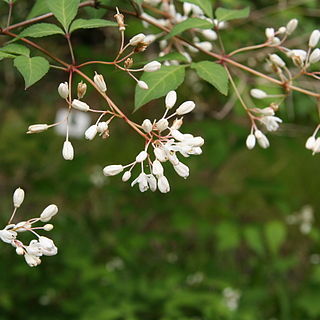A shrub or small tree. It grows 2-10 m high and spreads 1.8 m wide. It loses its leaves during the year. The leaves have 3 leaflets. These are lance shaped. There are sharp teeth along the edge. There is down underneath the leaf on the veins. The flowers are white and in panicles. The fruit are pods 25 mm long. They have 2 lobes.


